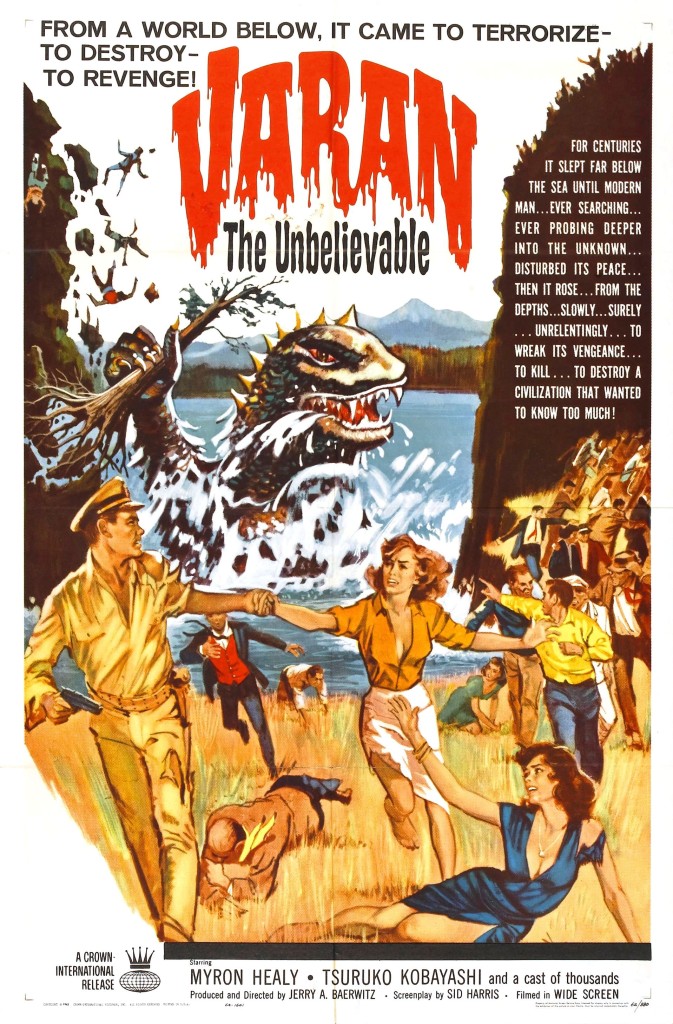Godzilla VS Spacegodzilla – 1994, Kensho Yamashita – Japan
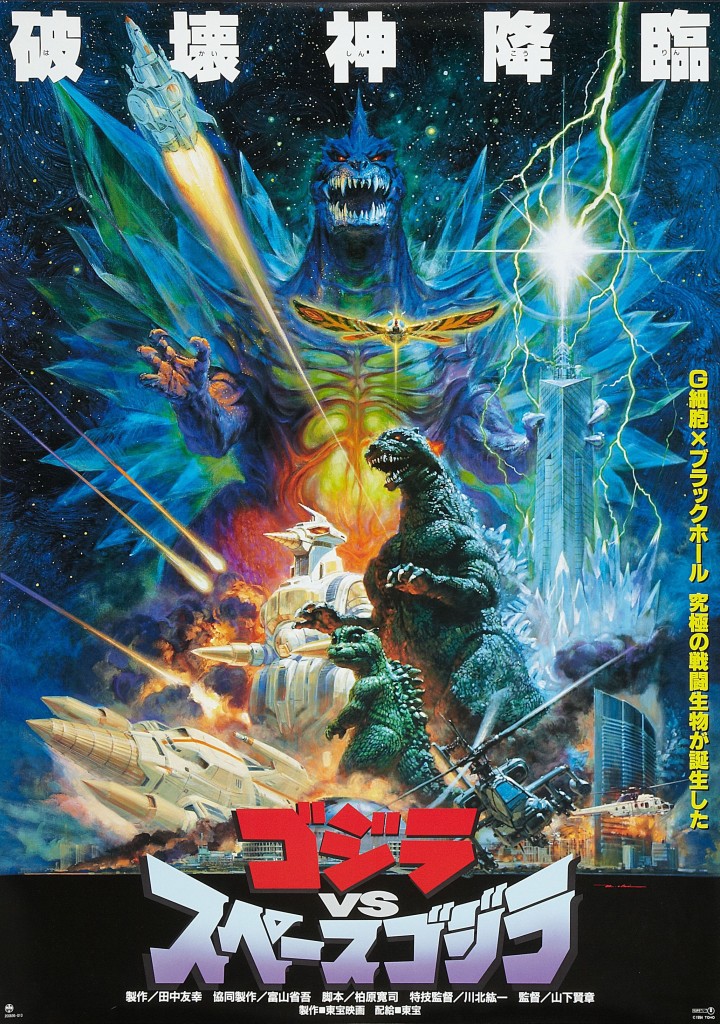
(ACTUAL CONVERSATION RECORDED INSIDE THE OFFICES OF TOHO)
“Dude…We’ve had Godzilla fight like… lots of stuff already.”
“Yeah, I know….”
“… What if we just had him fight… like… another Godzilla?”
“…You mean, like, Mechagodzilla?”
“…Yeah.”
“Uhhhhh…. I dunno, man. We just did that…”
“Okay, okay, not like, a Mecha one… What about, like… Like….Ummmmmm….. Oh, how ‘bout like, a space one?!”
“……..A spacegodzila?”
“…Yeah!”
“…Can it have like… A shit load of crystals all over it?”
“Hell yeah, it can.”
“….Okay. Sure, we can do that.”
AND…. it was underwhelming. Spacegodzilla, the character, is face-palmingly over the top. If you wanted an illustrative comparison between the shift in how the original Godzilla was designed in 1954, and the school of thought informing the creation of Spacegodzilla 40 years later, I offer forth this comparison; Consider that the original Godzilla from Gojira is like Japanese Kabuki theater; Strange, grim, and haunting, yet somehow beautiful and understated. Now, in terms of the energy that went into the conceptual design behind Spacegodzilla, on the other hand, consider every track ever recorded by the band Dragonforce playing simultaneously at a volume that would guarantee hearing loss. That’s what it would be like. Have you seen those crystal poking out of his damn sholders? Freaking ridiculous. And while we’re making comparisons, if you were looking for an appropriate forerunner for this film from the Showa era, Godzilla Vs Spacegodzilla is both the Godzilla Vs Gigan, and the Godzilla Vs Megalon of the Heisei series. That’s not great, guys. And you’re about to know it.
THE PLOT~ Japan has two plans now; and they’re gonna try them both. We’ve got Project T, and Project M. Breakin’ it down:
PROJECT T- Remember Mikki, the psychic girl who has been in every damn one of these movies but hasn’t really contributed in any solid way whatsoever? Well, they want to lodge a damn satelite dish in Godzilla’s neck and see if she can hijack his brain. Spoiler alert; She can’t.
PROJECT M– Remember how we just did the whole Mechagodzilla thing, and it failed? Well, how about sinking another couple billion tax yen into a second giant, metal robot to fight Godzilla? “Thought you’d never ask,” Says G-Force. What we end up with is Moguera, and yes, it’s another giant, vaugley monster shaped robot, but Moguera is different. What’s strange about Mogera is that he sort of seems like whoever designed him had weird priorities. Like, yeah, he’s got some weaponary on him, but he really seems like he was intended for 50% monster combat and 50% digging hella tunnels. I’m not sure why he would ever need to dig hella tunnels, but hey, who knows? Maybe if they had outfitted Mechagodzilla with the ability to just burrow like a mother fucker we wouldn’t be having this conversation right now. And anyway, Moguera represents progress, because it’s a sign that G-Force is finally starting to understand that you don’t necessarily have to design your weapon to look exactly like your target for it to be effective. I mean, a gun isn’t shaped like a human, but it sure can put one down real good. Just food for thought, G-Force.
Anyway.
So, in hopes of getting things under control and eliminating the need to deploy an enormous mechanized war machine on a highly populated city, Project T kicks off their Godzilla brain hijacking mission first by sending a small group of G-Force personnel off to Birth Island, where Godzilla kinda sorta lives. Among this group we have:
Miki – Who cares? (Actually, Miki sucks a lot less in this movie than she does in any other Heisei film.)
Shinjo and Sato – Two knucklehead soldiers who are sorta like the Merry and Pippin of the Godzilla cannon. These two are actually kinda fun, and I like them quite a bit.
Dr. Gondo – This lady is the sister of Lieutenant Goro Gondo, who got Godzilla’d to death back in Return of Godzilla. Naturally, she hates Big Green, and she wants his scaly ass six feet under… Or, I guess, six miles under?
Other people– who cares?
When our rag tag team of G-Force bozos hits the beach on Birth Island, they encounter it’s two full time residents. They are:
Little Godzilla– “Baby” has grown up a little, which oddly enough has made him look drastically more infantile. Whatever, it’s an improvement, when he first appeared in Godzilla Vs Mechagodzilla II, he looked both stupid, and hideous. This redesign has him looking a little bit more like the baby from the Dinosaurs sitcom, but also a little more like Minilla, which I think is a plus, somehow. That being said, he still looks cartoonish, and not very believable. Really, Toho did a better job pulling off Minillia way back in Son Of Godzilla, and in general the special effects in Godzilla Vs Spacegodzilla feel shabby as shit.
Major Yuki– This character is the real star of Godzilla Vs Spacegodzilla in my mind. Yuki is a grizzled, angry old bad ass/maverick who has been camped out on Birth Island with the intent of murdering Godzilla single handedly, because Godzilla killed his best friend, the previously mentioned Lieutenant Gondo. Damn, Gondo was apparently just the wrong dude for Godzilla to kill, I guess.
Anyway, the failure of Project T (Yeah, it fails) really just serves to bring this group of people closer together, and they form our core characters throughout the rest of the movie.
Actually, it’s maybe worth mentioning that when our team gets to Birth Island, there are also these giant, moving, jagged crystal protrusions that shoot green lightning into the sky in the middle of the island, but none of our characters really seem to think they’re anything special. I would have been alarmed, but I guess what do I know? Except that I was right, these would have been worth investigating, because pretty soon Spacegodzilla turns up and this formation is apparently his space dragon landing pad. Birth Island really isn’t big enough to support two skyscraper sized battle-monsters, so pretty much immediately Godzilla comes face to face with Spacegodzilla, and he does not fare well in the confrontation- it ends with Spacegodzilla depositing Little Godzilla inside one of his weird, crystal chambers, which seems like a bad thing since Godzilla definitely did not want him to do that. These two are now enemies.
So, just what in the fuck is Spacegodzilla? Well, I’ll tell you; he is, theoretically, some sort of weird, galactic anomaly formed from wayward Godzilla DNA carried into space via Mothra or Biolante (Even though Biolante never happened at this point, as it was undone in the events depicted in the utterly stupid Godzilla Vs King Ghidorah) which mixed with like, space gasses, or crystals, or slime, or something. Some kind of space stuff. So, he’s genetically similar to Godzilla, but spacier. This is bad for our decidedly less-spacey Earth Godzilla, who ends up slugging it out with Spacegodzilla again on mainland Japan. Godzilla may not have stood a chance against his interplanetary sibling, but luckily control of Mogera had at this point been handed over to Shinjo, Sato and Yuki, and the three manage to work with Godzilla to kick the shit out of Spacegodzilla until he freaking dies. Awesome, actually. I can’t believe how cool Moguera ends up being in this movie, and it even gets to dig some tunnels, which is useful to our team, believe it or not.
So, what’s good, and what’s bad? This movie has a healthy portion of both, so we need to sift through it before he iron out an assessment.
THE GOOD:
Moguera! More accuratley, Shinjo, Sato, and Yuki, the three soliders tasked with the job of piloting Moguera in his attack on Spacegodzilla. When Mechagodzilla frumped on out to throw-down on Big G in Godzilla Vs Mechagodzilla II, it had several pilots, and we only really knew and gave a shit about one of them. Hell, even he wasn’t that likable, to be honest. This time around, we keep our crew small, and we’ve already spent a bit of time getting to know each of them before they suit up and hop behind the wheel, so in this way the fate of Moguera feels like something we’re much more invested in. And Moguera doesn’t come out unscathed, this confrontation feels desperate and dirty in a way that I haven’t seen done this effectively since Destroy All Monsters, and we actually care about the outcome.
Also remarkable is how much better Miki is in this film than she has ever been before. She plays into the plot in a way that doesn’t feel nearly as unnecessary or tacked on as it has in the past, plus she ends up with an emotional investment in another human character, and contributes to the outcome of events in a way that felt warranted, and valuable. So, that’s one out of six, Miki… Still a failing grade… But this is your movie.
The bad, on the other hand, mostly comes down to production value… And it’s sort of a long list. Here we go.
THE BAD:
Number one; Spacegodzilla… You suck. Spacegodzilla is both super, super over the top, and surprisingly boring. It’s like the whole “X-TREME!” thing from the tail end of the 90’s, just being “X-TREME” really isn’t enough, you also have to not suck ass. That’s the lesson of Spacegodzilla, who feels neither original, nor well developed enough to hold our interest. The one hope you have of giving a shit is if you somehow have a weird, psychological malfunction that makes you just fucking gaga for Space Crystals, because that’s one thing Spacegodzilla does do, he brings the Space Crystals like no one else. Beyond that, this is a snooze fest- population: Spacegodzilla. You’re garbage,
Secondly, the effects…. Holy shit, they’re terrible. This movie feels cheapier, shoddier, and more like an episode of Power Rangers than any Godzilla movie ever before or since. This really is the relative low water mark for special effects in a Godzilla movie. Firstly, the composite shots- wow. Maybe the technology just wasn’t there in the 90’s, but these stand out as being fails unworthy of the franchise, without question. Next, all of the outer space sequences in this film are unforgivably hokey and dated. Spacegodzilla’s assault on the Nasa spacestation, and Moguera’s subsequent outer space battle with Spacegodzilla are both embarrassing and look like they belong in the non-theater sequences of Mystery Science Theater 3000– the black sheet background with dangling planets and monsters on strings just can’t be pardoned. This is an example of an effect that has been obsolete since the 70’s, and I can’t wrap my mind around the fact that we see them here in a film from the 90’s. It’s just pitiful how badly these sequences were done, given the quality we expect from Toho at this point.
And it’s far from isolated just to those sequences, all of Godzilla Vs Spacegodzilla is just sorta shitty looking all over. This film is so much closer to a 1960’s B-movie than any ACTUAL Toho 1960’s B-movie ever was, and it doesn’t feel like this was done deliberately at all, there is an element of crappiness that just permeates this film’s production value completely and cheapens it beyond redemption, which is a total shame, because Godzilla deserves better.
That being said, there is one arena where this film shines, and that is in it’s tail puppetry. Godzilla’s tail is like, freaking miles long, and it wiggles about like a live trout, stranded on a rock. Toho did not let the quality of their tail puppetry droop with the rest of the production value, and it has to be acknowledged, they are the absolute unrivaled masters of tail puppetry on this planet. All hail the true Tail Puppetmasters.
So, GvSG sucks in all the areas you’d expect it to excel, but somehow manages to kind of break even in the least predictable way; by giving us human characters we like and care about, including one who has been around a while now without much to show for it before this film (that would be Miki, of course.) Additionally, Moguera, who sucked like crazy in The Mysterians, is kinda cool in this, so Godzilla Vs Spacegodzilla is a real curveball. In the end, it’s still one more nail in the coffin for the underperforming Heisei series, which honestly, I wanted to enjoy a lot more than I do.
C-
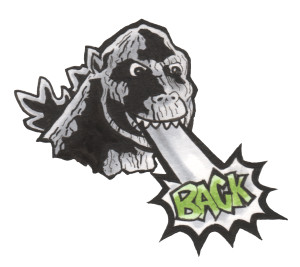
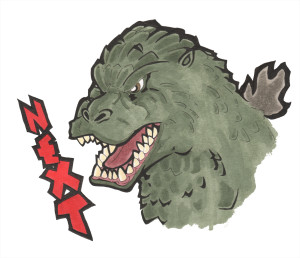
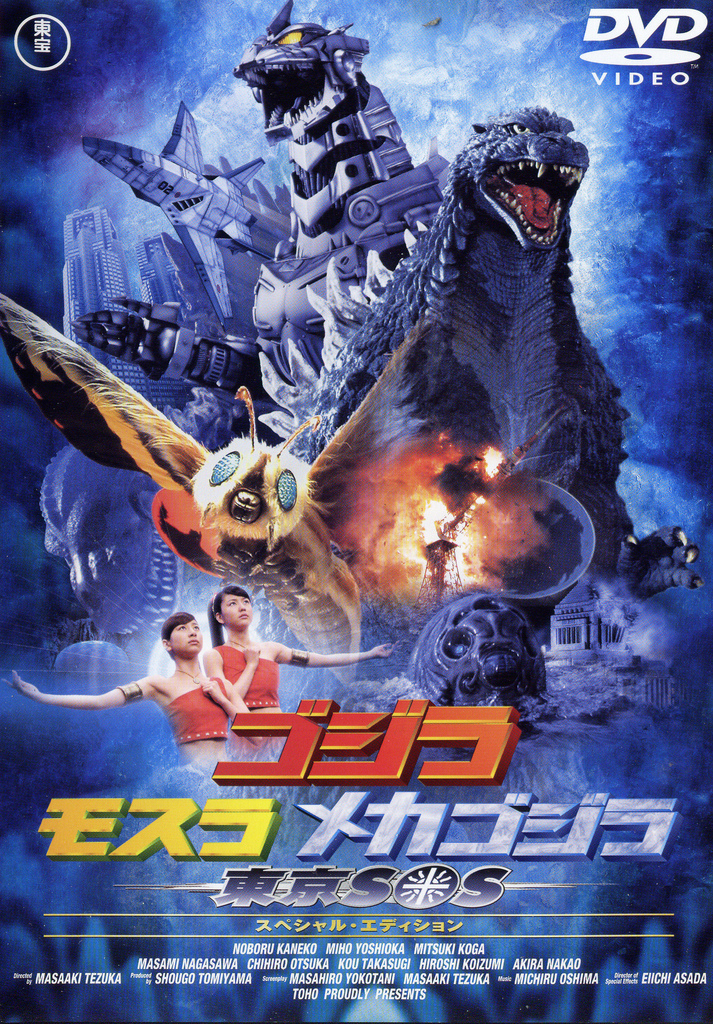 Wow! I had some low expectations for this one, but Godzilla: Tokyo S.O.S. is actually pretty solid!
Wow! I had some low expectations for this one, but Godzilla: Tokyo S.O.S. is actually pretty solid!


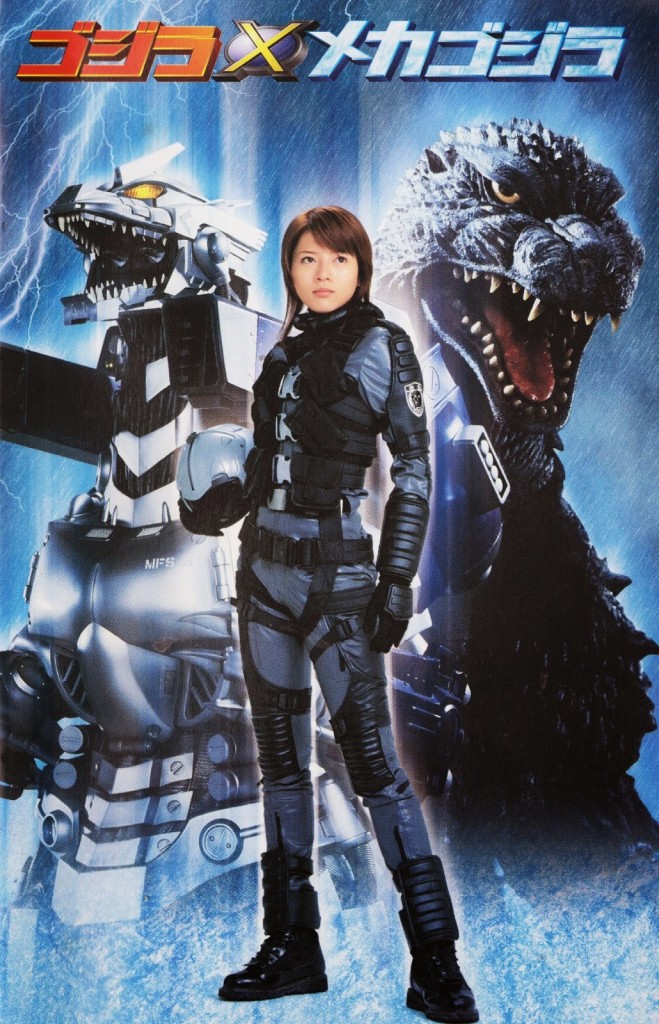
 THE PLOT~ Akane is a determined, but emotionally damaged woman who channels her dismissive outlook on the sanctity of life into an successful career in the armed forces. Tokumitsu is a brilliant scientist, and a pioneer in the field of DNA computer technology, which will probably be instrumental to Skynet when the Machines rise up to kills us all. Hayama is his daughter, and her mom is dead, so naturally she’s going to make a big deal out of that. The three are brought together as part of a project to create Kiryu– the modern day Mechagodzilla, using the recovered skeleton and DNA of the original Godzilla, which was killed by the oxygen destroyer back in 1954.
THE PLOT~ Akane is a determined, but emotionally damaged woman who channels her dismissive outlook on the sanctity of life into an successful career in the armed forces. Tokumitsu is a brilliant scientist, and a pioneer in the field of DNA computer technology, which will probably be instrumental to Skynet when the Machines rise up to kills us all. Hayama is his daughter, and her mom is dead, so naturally she’s going to make a big deal out of that. The three are brought together as part of a project to create Kiryu– the modern day Mechagodzilla, using the recovered skeleton and DNA of the original Godzilla, which was killed by the oxygen destroyer back in 1954.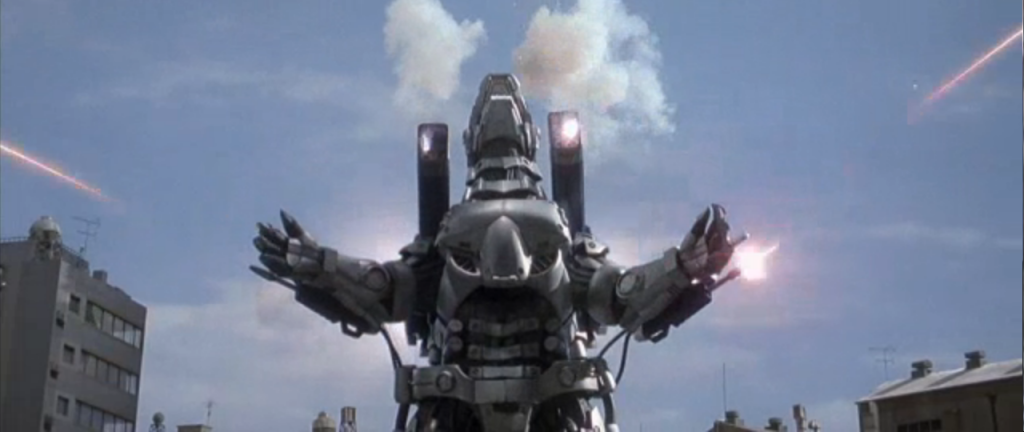
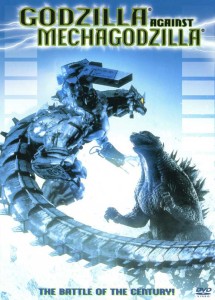
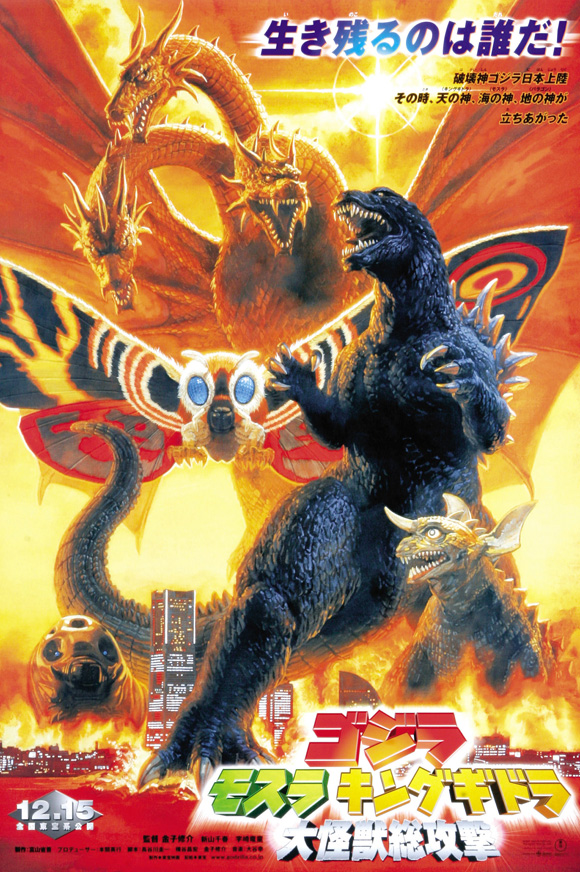
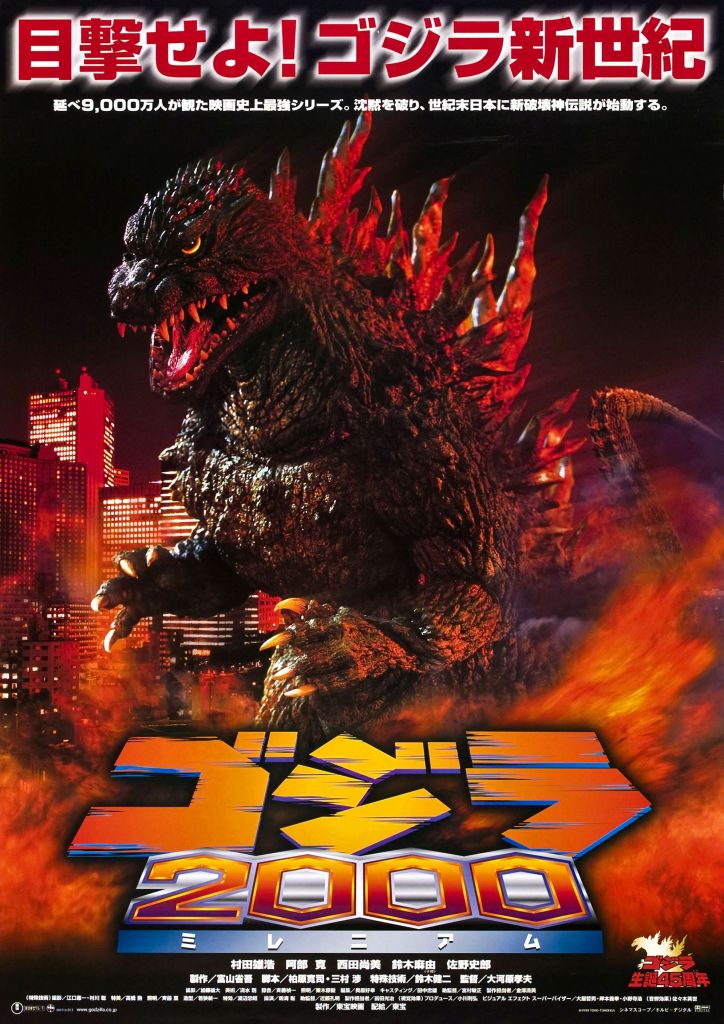

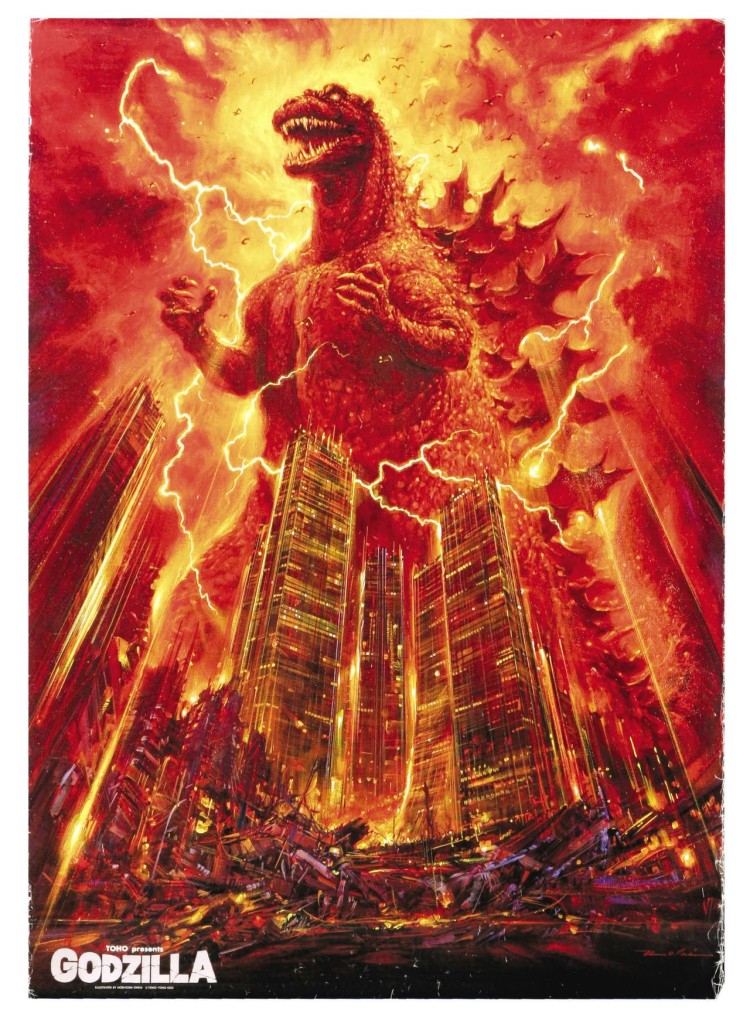
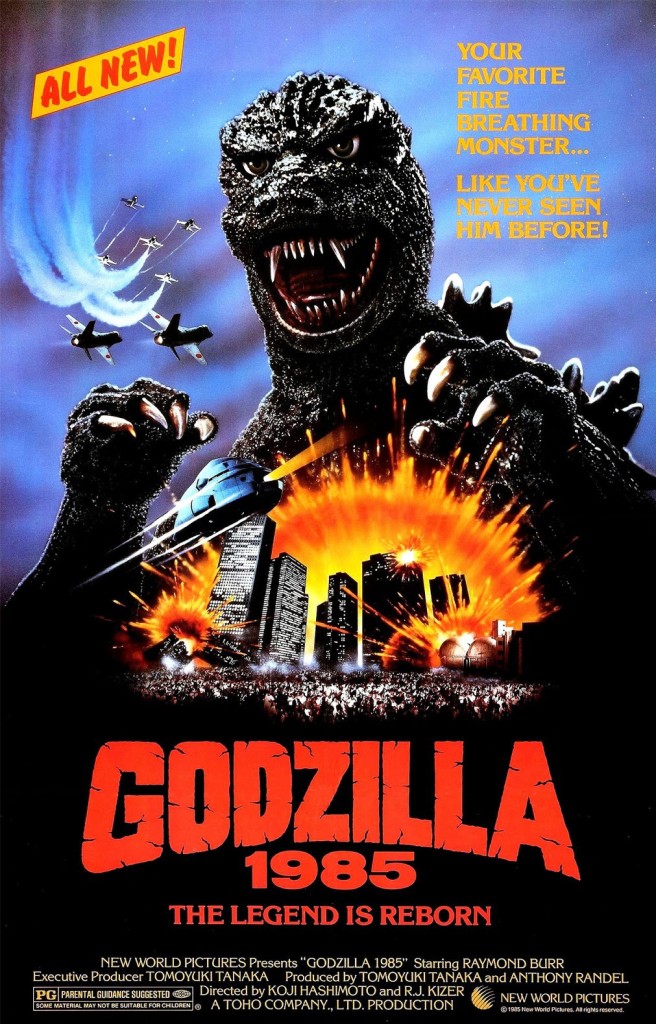
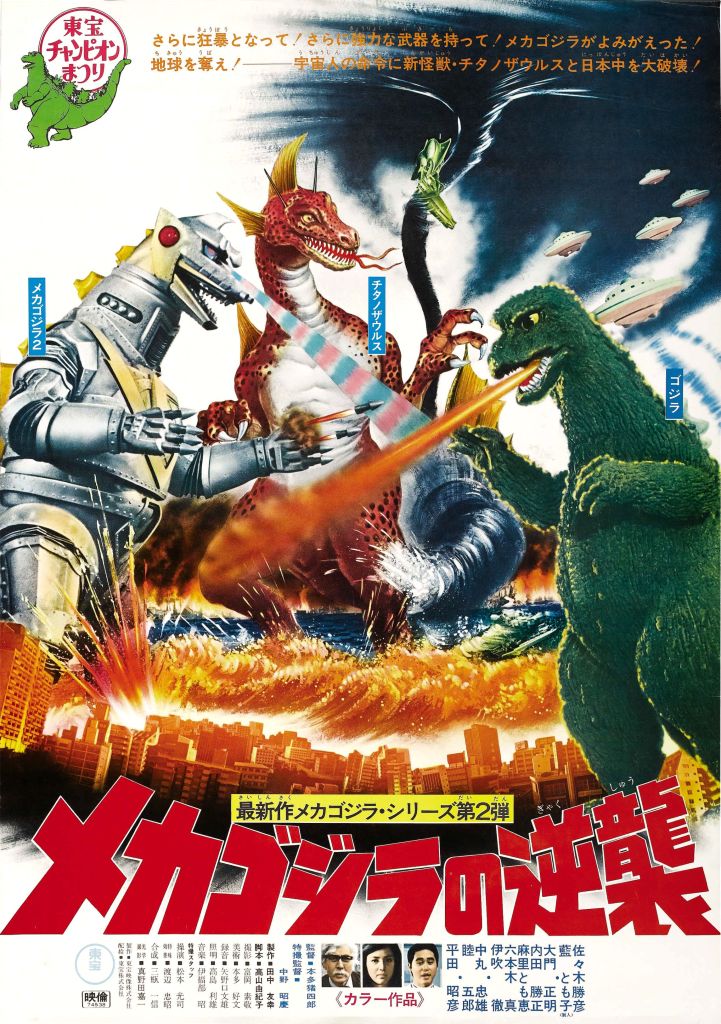


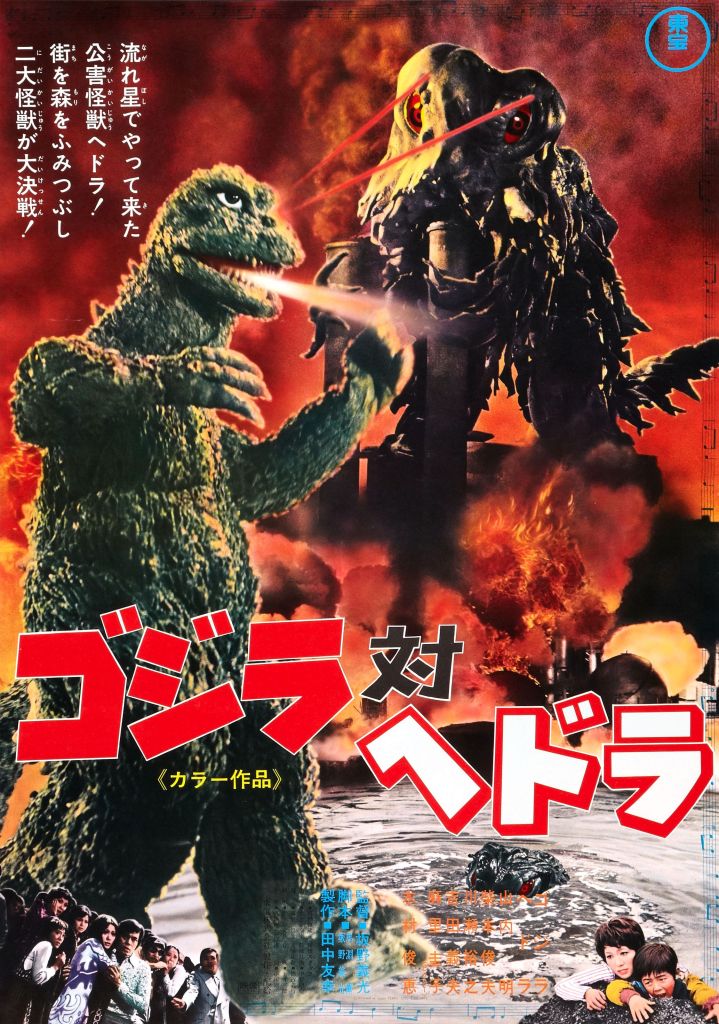
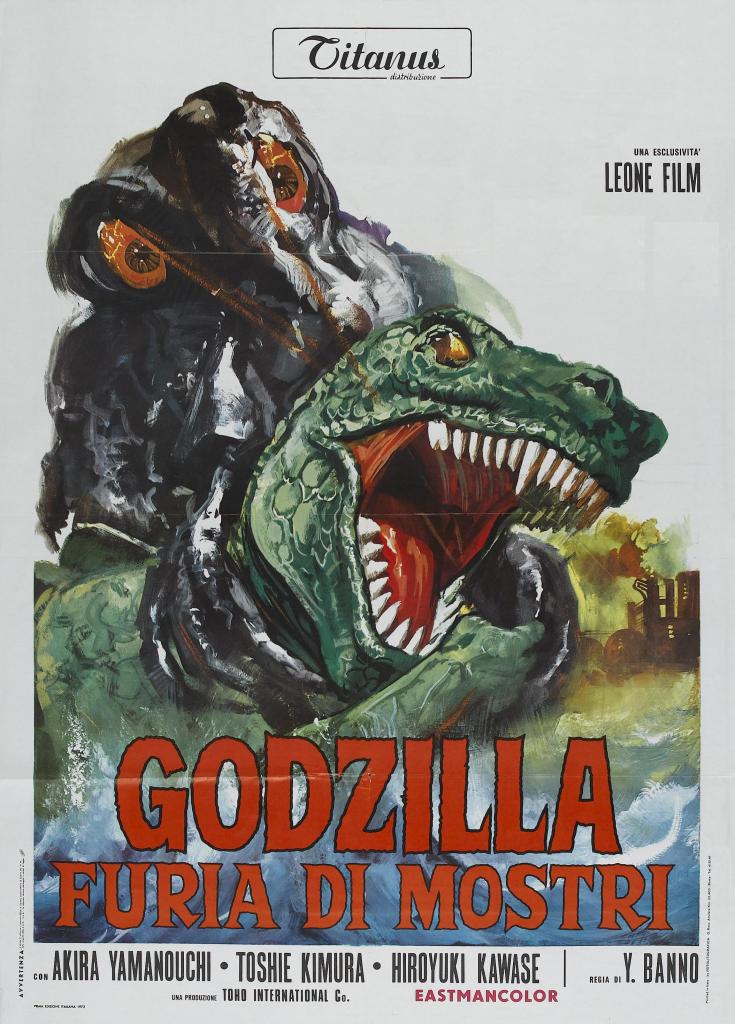
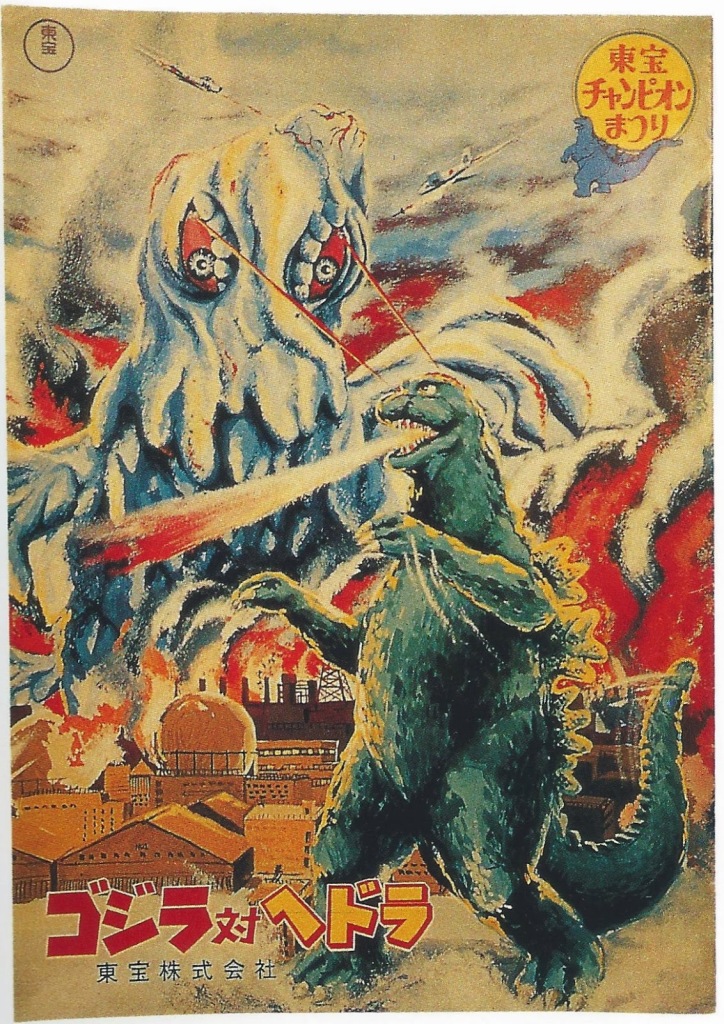
 n, he’s playing with Godzilla toys in his backyard. Throughout the film he claims to have dreams and premonitions of Godzilla rising up out of the sea to rescue mankind from Hedorah, who has evolved into a biped with the ability to fly, and has decimated Tokyo, leaving many dead. The film is presented in a strange, almost dreamlike manner, inter-cutting jazzy 70’s split-screen techniques, frightening hallucination/dream sequences, and even occasional short animated sequences, which really lends credibility to the idea that this film could actually just be Ken’s fantasy. Perhaps we never really leave the backyard and Ken’s clunky, plastic monster dolls are playing out the events of Godzilla VS Hedorah for us. While the movie certainly presents itself as being cannon, there is enough here to justify the “child’s fantasy” idea, and the movie is open ended enough, if you want it to be. Several important monster related plot points are triggered by Ken’s “visions”, and these sometimes carry an odd imaginative feel, such as when Ken claims to spot Godzilla lurking unseen by anyone else amongst the city’s skyline while riding a roller coaster.
n, he’s playing with Godzilla toys in his backyard. Throughout the film he claims to have dreams and premonitions of Godzilla rising up out of the sea to rescue mankind from Hedorah, who has evolved into a biped with the ability to fly, and has decimated Tokyo, leaving many dead. The film is presented in a strange, almost dreamlike manner, inter-cutting jazzy 70’s split-screen techniques, frightening hallucination/dream sequences, and even occasional short animated sequences, which really lends credibility to the idea that this film could actually just be Ken’s fantasy. Perhaps we never really leave the backyard and Ken’s clunky, plastic monster dolls are playing out the events of Godzilla VS Hedorah for us. While the movie certainly presents itself as being cannon, there is enough here to justify the “child’s fantasy” idea, and the movie is open ended enough, if you want it to be. Several important monster related plot points are triggered by Ken’s “visions”, and these sometimes carry an odd imaginative feel, such as when Ken claims to spot Godzilla lurking unseen by anyone else amongst the city’s skyline while riding a roller coaster.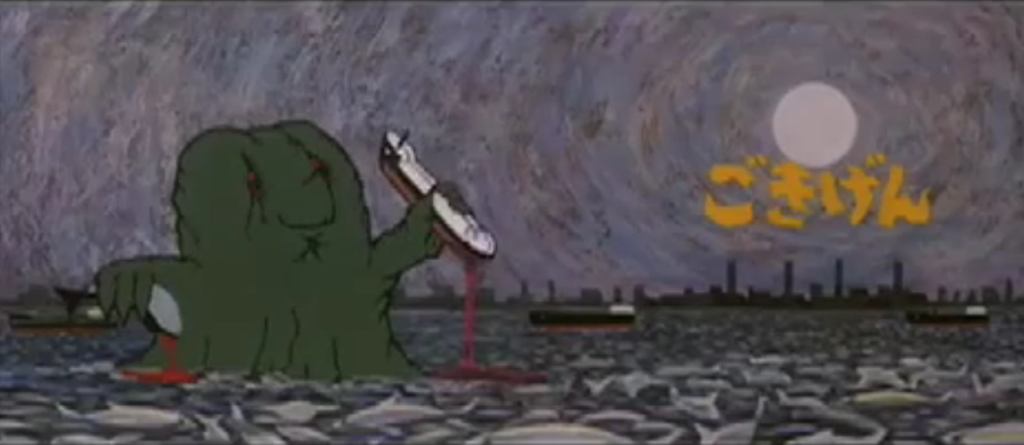
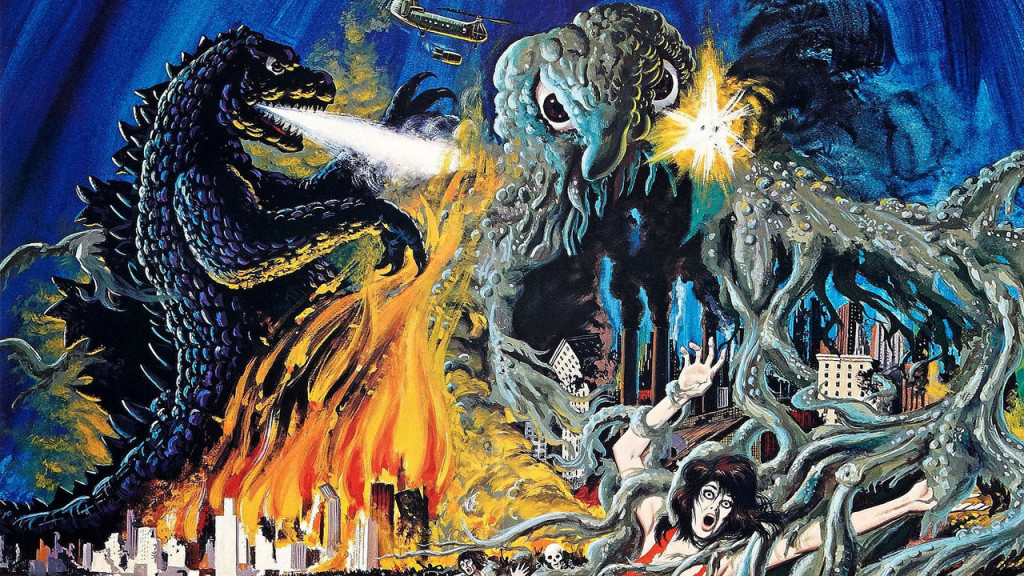
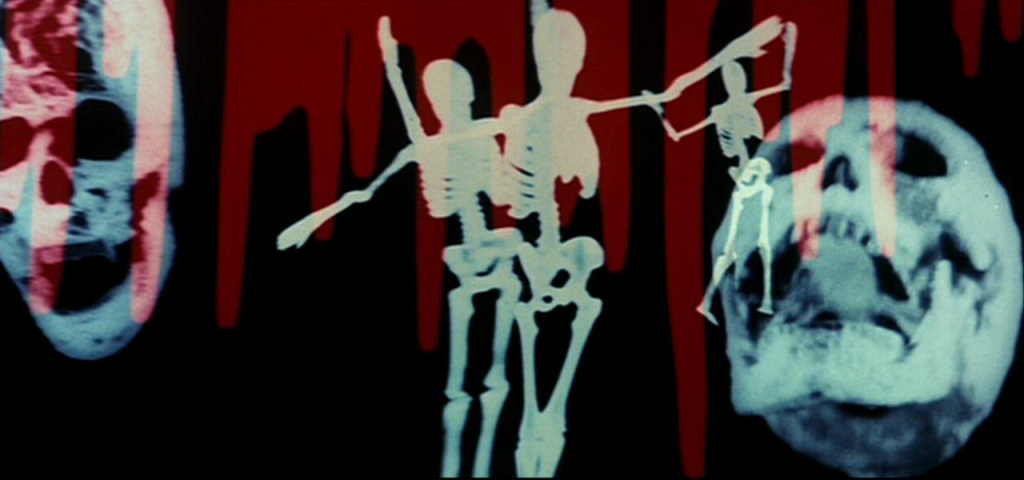
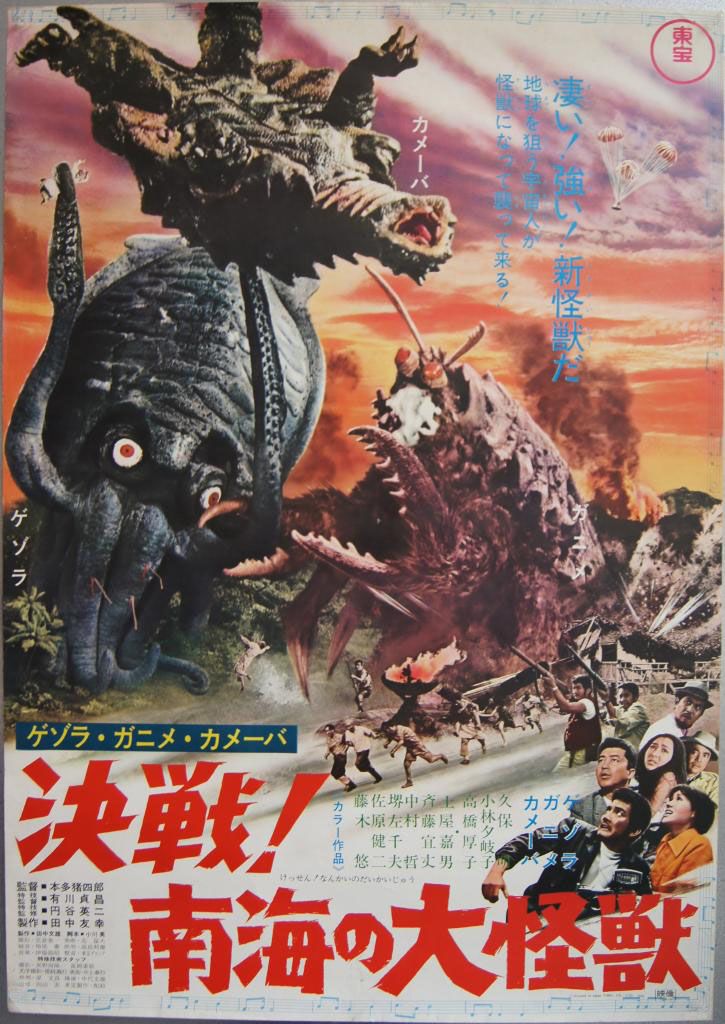
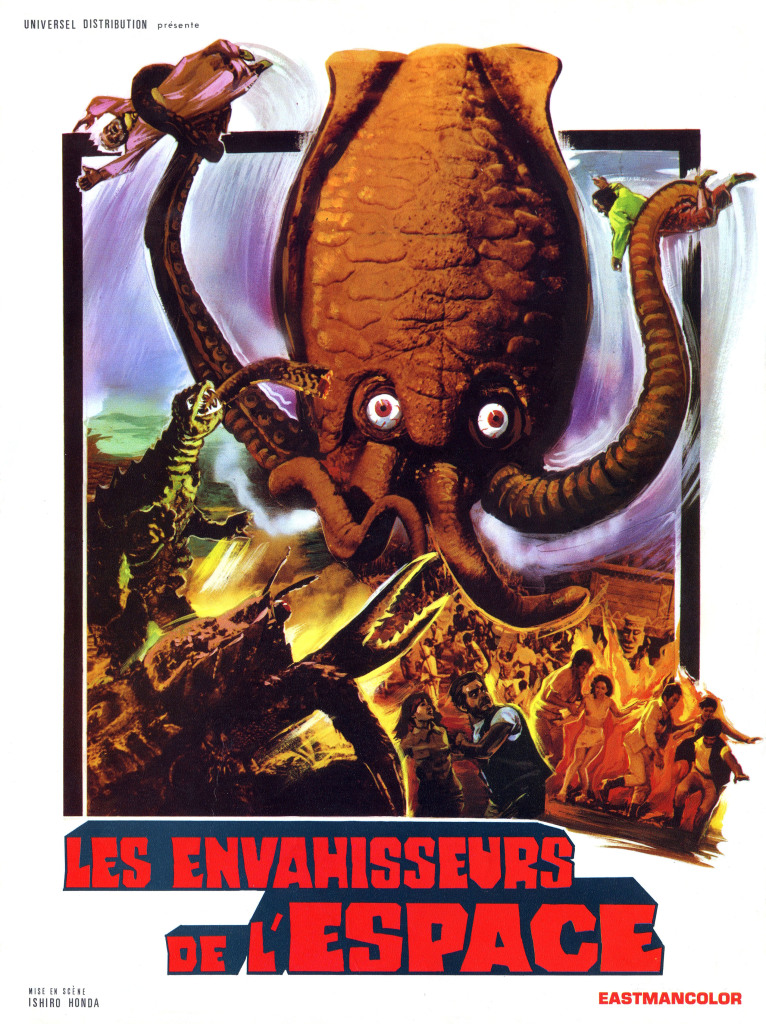
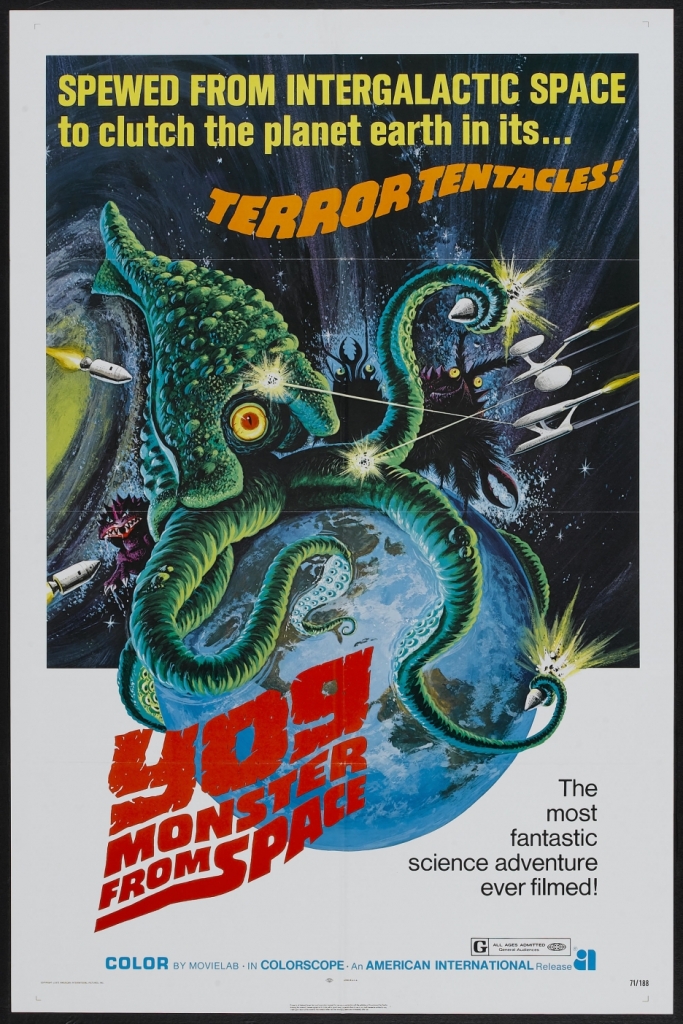
 Space Amoeba feels a little cheap, too, almost like they had a few extra reels of film and a bunch of unused monster suits so they decided to squeeze out one more movie before going back to the producers for more funds. I think this one might be for completest only, it’s too difficult to obtain to warrant a viewing for casual Zilla fans.
Space Amoeba feels a little cheap, too, almost like they had a few extra reels of film and a bunch of unused monster suits so they decided to squeeze out one more movie before going back to the producers for more funds. I think this one might be for completest only, it’s too difficult to obtain to warrant a viewing for casual Zilla fans.